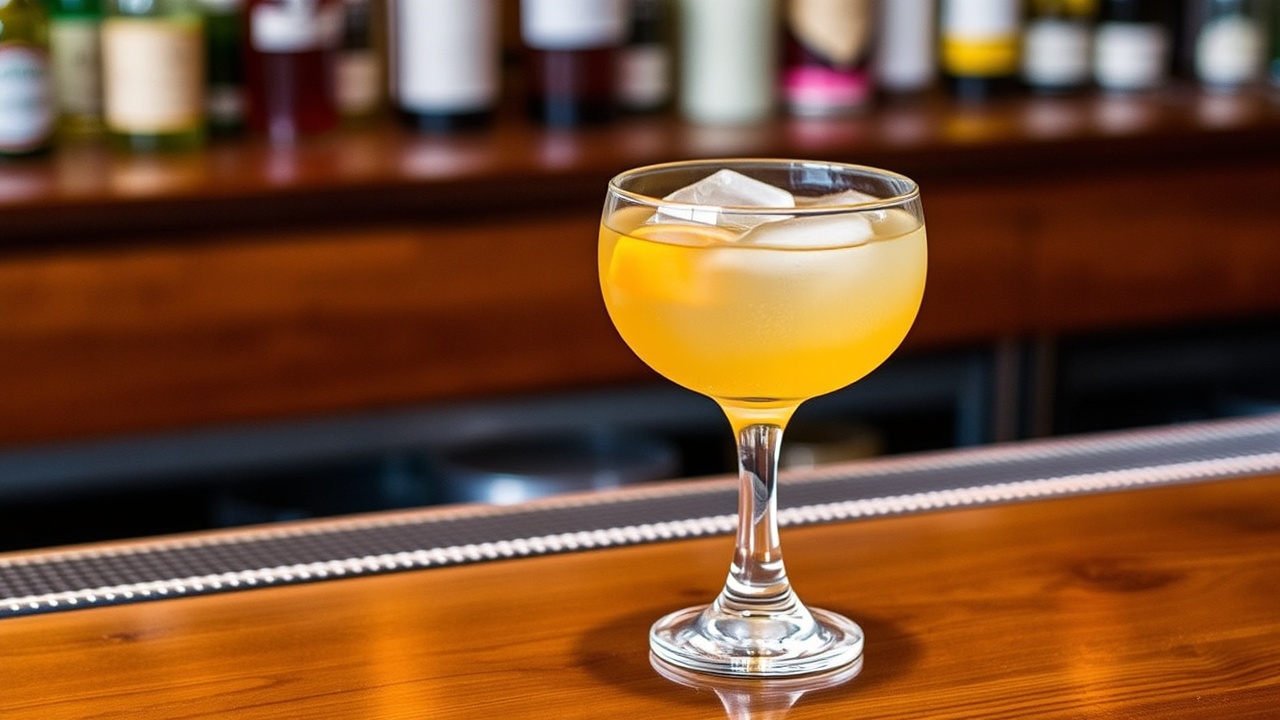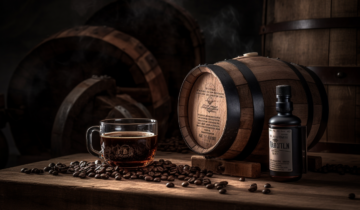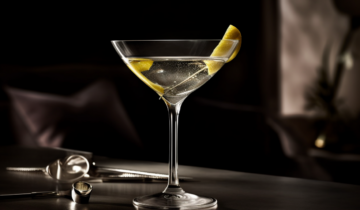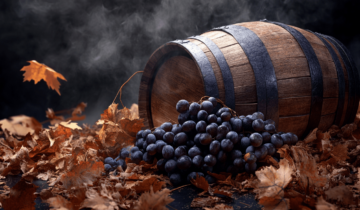The Old Pal cocktail is a delightful blend of history, flavor, and simplicity, making it a timeless drink that is perfect for any occasion. This classic cocktail not only showcases the art of mixing with equal parts rye whiskey, dry vermouth, and Campari, but it also reflects the rich narrative of its origins. Whether you’re a seasoned drinker or a casual enthusiast, the Old Pal offers a sophisticated experience that can transport you back to the vibrant 1920s, where the cocktail first made its mark. Let’s delve into the fascinating history and essential characteristics that elevate the Old Pal cocktail to its classic status.
Understanding the Old Pal Cocktail
History of the Old Pal Cocktail
The Old Pal cocktail first appeared in print in 1927, thanks to Harry MacElhone’s influential book, “Barflies and Cocktails.” It is credited to William “Sparrow” Robinson, a notable sports editor for The New York Herald in Paris. The cocktail’s affectionate name nods to Robinson’s term for his friends, capturing the essence of camaraderie. Initially, the recipe featured equal parts Canadian Club whisky, Italian vermouth, and Campari, a combination that quickly gained traction during the Prohibition era. This period showcased the resilience of classic cocktails and their ability to adapt. Over time, the recipe evolved to favor dry French vermouth, solidifying its place as a beloved drink that continues to impress with its bold flavors and straightforward preparation.
What Makes it a Classic Drink
The Old Pal is celebrated as a classic cocktail due to its well-balanced flavor profile and the choice of high-quality ingredients. This drink features a harmonious blend of rye whiskey, dry vermouth, and Campari, resulting in a spirit-forward concoction that intrigues the palate. The spicy character of rye whiskey contrasts beautifully with the bitterness of Campari and the herbal notes of dry vermouth, creating a complex yet accessible experience. Its simplicity, requiring only three main ingredients, allows each flavor to shine through distinctly. Furthermore, the Old Pal’s historical significance, particularly its connection to the cocktail renaissance of the early 20th century, cements its status as a timeless drink that continues to be enjoyed by cocktail enthusiasts around the globe.
Variations of the Old Pal Cocktail
While the classic Old Pal cocktail recipe calls for equal parts rye whiskey, dry vermouth, and Campari, modern variations abound, showcasing the drink’s versatility. Some recipes alter the ratios, often leaning towards a 2:1:1 setup, which emphasizes the whiskey’s bold presence. A popular variation is the Boulevardier, which substitutes bourbon for rye and sweet vermouth for dry, creating a richer flavor profile. Bartenders often experiment with different vermouth brands or enhance the cocktail’s complexity with additional bitters. Garnishing options also vary, with some opting for a lemon twist instead of the traditional orange slice, offering a different aromatic experience. These variations not only pay homage to the Old Pal’s classic roots but also invite creative exploration in the world of cocktails.
Ingredients for the Old Pal Cocktail
Essential Ingredients
The Old Pal cocktail is a harmonious blend of essential ingredients that come together to create a sophisticated drink. The foundation of this classic cocktail is rye whiskey, known for its spicy and robust flavor, which brings depth to the mix. Complementing the whiskey is dry vermouth, contributing its herbal and floral notes that balance the drink’s overall taste. The addition of Campari introduces a layer of bitterness, enhancing the cocktail’s complexity. Typically, the Old Pal recipe calls for equal parts of these three ingredients, making it straightforward for both novice and experienced mixologists alike. A garnish, such as a lemon twist or an orange slice, not only elevates the cocktail’s visual appeal but also adds a refreshing citrus aroma, enriching the drinking experience. Ensuring that each ingredient is of high quality is crucial for achieving the best flavor profile in this classic drink.
Recommended Brands and Products
Choosing the right brands for each ingredient in the Old Pal cocktail can significantly elevate its flavor and overall experience. For rye whiskey, options like Boxergrail, Old Overholt, and Rittenhouse are highly regarded for their unique characteristics and quality. These brands provide the necessary spice and warmth that define the cocktail. When it comes to dry vermouth, Dolin and Noilly Prat stand out with their crispness and complex herbal notes, making them excellent choices for this drink. Campari is a mandatory inclusion, as its distinct bitter flavor is essential to the Old Pal’s identity. By selecting these recommended brands, cocktail enthusiasts can ensure a well-balanced and flavorful experience that honors the traditional Old Pal recipe while delighting the palate.
Ingredient Substitutions
For those who may not have access to the traditional ingredients of the Old Pal cocktail, there are several viable substitutions that can still yield a delicious drink. If rye whiskey is not on hand, bourbon can be an alternative, although it will impart a sweeter flavor profile and a less spicy character. For a lighter option, consider using a lower-proof rye, but be mindful to adjust the ratios to maintain balance. In the absence of dry vermouth, a good-quality white wine or another type of dry vermouth may serve as a substitute, keeping in mind that the taste will be altered. Lastly, if Campari is unavailable, alternatives like Aperol or other bitter liqueurs can provide a similar bitter-sweet taste, though they will not replicate Campari’s unique flavor. These substitutions allow for flexibility while still enjoying the essence of the Old Pal cocktail.
Step-by-Step Old Pal Cocktail Recipe
Preparation Instructions
To prepare an Old Pal cocktail, start by gathering your essential ingredients: 1 ounce of rye whiskey, 1 ounce of dry vermouth, and 1 ounce of Campari. This classic cocktail recipe showcases the balance of flavors that make the Old Pal a timeless drink. Begin by filling a mixing glass with ice cubes to ensure that the drink is properly chilled. Pour in the rye whiskey, dry vermouth, and Campari, emphasizing the equal parts that define this cocktail. Stir the mixture well for about 30 seconds until it is thoroughly chilled; this step is crucial to achieving the right flavor profile and texture. Once chilled, strain the cocktail into a chilled coupe or rocks glass. Finally, garnish your drink with a lemon twist or an orange slice to enhance its aroma and visual appeal, embodying the essence of the Old Pal cocktail.
Mixing Techniques for the Perfect Drink
Mastering mixing techniques is essential for crafting the perfect Old Pal cocktail. The key to this classic drink lies in stirring rather than shaking the ingredients. Shaking can introduce unwanted aeration and cloudiness, while stirring maintains the cocktail’s clarity and smooth texture. Utilize a bar spoon or a long mixing spoon to gently stir the mixture in a circular motion for approximately 30 seconds. This technique ensures that the flavors meld together beautifully while preserving the integrity of each ingredient. Additionally, using a fine mesh strainer when pouring the cocktail into the glass prevents any ice shards from affecting the drink’s presentation. By honing these mixing techniques, you can create a cocktail that not only tastes fantastic but also looks sophisticated and refined, embodying the spirit of this classic drink.
Serving Suggestions
The Old Pal cocktail is best served chilled in either a coupe or rocks glass, enhancing its classic presentation. To elevate your serving experience, consider chilling the glass beforehand by filling it with ice water while you prepare the cocktail. Once poured, you can garnish with a lemon twist or an orange slice, adding a splash of color and an aromatic citrus note that complements the drink’s flavor profile. This cocktail pairs exceptionally well with a variety of appetizers, particularly those rich or savory flavors, such as charcuterie boards, olives, or aged cheeses. The Old Pal’s bitter-sweet characteristics also make it a versatile choice, harmonizing beautifully with dishes featuring citrus or herbs. This combination of flavors makes the Old Pal an ideal selection for cocktail hour or dinner parties, inviting guests to indulge in a sophisticated experience.
Exploring Other Classic Cocktails
Comparing the Old Pal to Other Classic Cocktails
The Old Pal cocktail stands out not only for its distinct flavors but also for its similarities to other classic cocktails like the Boulevardier and the Negroni. While the Negroni features gin, the Old Pal opts for rye whiskey, which lends a bolder spice to the drink. In contrast, the Boulevardier uses bourbon and sweet vermouth, creating a richer and sweeter profile compared to the drier nature of the Old Pal. All three cocktails are built upon a similar foundation—combining a spirit, a bitter component, and vermouth. This commonality showcases the versatility of these ingredients and their ability to cater to various palates. Each cocktail provides a unique taste experience, yet they maintain a shared lineage, celebrating the rich tradition of classic cocktail culture.
How to Pair Cocktails with Food
Pairing cocktails like the Old Pal with food can significantly enhance the overall dining experience by complementing and contrasting flavors. Given the Old Pal’s bitter and spicy profile, rich cheeses, charcuterie, or smoked meats serve as excellent pairing options, as these flavors can stand up to the cocktail’s bold character. Seafood dishes, especially those infused with citrus or herbs, also harmonize beautifully with the drink’s refreshing qualities. For lighter fare, salads dressed with vinaigrette or grilled vegetables can provide a nice contrast, accentuating the cocktail’s intensity. The key to successful pairing lies in experimentation—finding the combinations that resonate with your taste preferences can lead to delightful culinary adventures that elevate the enjoyment of both the food and the Old Pal cocktail.
Resources for Classic Cocktail Recipes
For cocktail enthusiasts eager to dive deeper into the world of classic drinks, numerous resources are available to guide you through the process. Books like “The Savoy Cocktail Book” by Harry Craddock and “The PDT Cocktail Book” by Jim Meehan are treasure troves of classic cocktail recipes and techniques. Online, platforms such as Liquor.com and Serious Eats feature extensive cocktail sections filled with recipes, tips, and variations that cater to both novice and experienced mixologists. Additionally, cocktail-focused blogs and YouTube channels offer invaluable tutorials and insights into the art of crafting these timeless drinks. Engaging with these resources can enrich your understanding of classic cocktails and inspire your own creative adaptations, allowing you to craft a personal version of the Old Pal and other beloved drinks.
Q: What is the history behind the Classic Old Pal Cocktail?
A: The Classic Old Pal Cocktail is often attributed to Harry MacElhone at Harry’s New York Bar in Paris. It is said to have been created as a reference to a joke regarding the 30th of February, where you could “put a bet” that such a date would never exist.
Q: What are the main ingredients in a Classic Old Pal Cocktail?
A: The Classic Old Pal Cocktail calls for dry vermouth, Canadian whisky, and Campari, which creates a warming and tart flavor profile. The drink is traditionally garnished with a cherry.
Q: How does the Classic Old Pal Cocktail compare to a Classic Negroni?
A: While both cocktails include Campari, the Classic Old Pal Cocktail uses Canadian whisky, whereas the Classic Negroni is made with gin. The Old Pal also calls for dry vermouth instead of sweet vermouth, making it a drier and slightly different experience.
Q: Can I use vodka instead of Canadian whisky in the Classic Old Pal Cocktail?
A: While you can experiment with vodka, the Classic Old Pal Cocktail is traditionally made with Canadian whisky. Using vodka will alter the flavor significantly, and you can’t go wrong sticking to the original recipe.
Q: What is the significance of Harry’s New York Bar in the cocktail’s history?
A: Harry’s New York Bar in Paris is a famous reference point in cocktail history, where many classic drinks, including the Old Pal, were popularized by bartender Harry MacElhone. It remains a symbol of cocktail culture and innovation.
Q: Are there modern recipes for the Classic Old Pal Cocktail?
A: Yes, there are modern recipes that may include variations such as different types of whisky or additional flavoring like cinnamon. However, the classic recipe remains a favorite for its simplicity and balance.
Q: What is the best way to serve a Classic Old Pal Cocktail?
A: The Classic Old Pal Cocktail is best served chilled in a cocktail glass. It is typically stirred with ice to chill and dilute slightly before straining into the glass.
Q: What is the flavor profile of a Classic Old Pal Cocktail?
A: The flavor profile is warming and tart, with the bitterness of Campari balanced by the sweetness of the whisky and the dryness of the vermouth. It’s a complex drink that offers a delightful experience.
Q: Can I add any additional ingredients to the Classic Old Pal Cocktail?
A: While the Classic Old Pal Cocktail is best enjoyed in its traditional form, some variations may include a twist of citrus peel or a splash of soda water for a different take. However, be mindful that adding too many ingredients can overpower the classic flavors.







